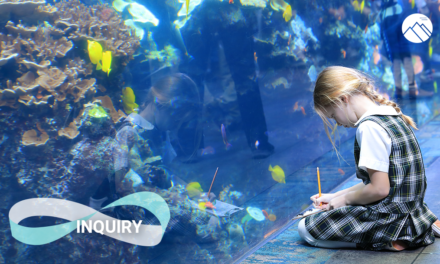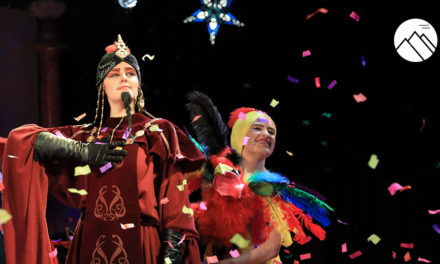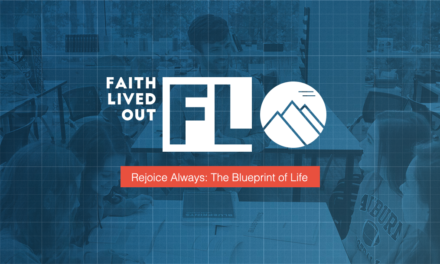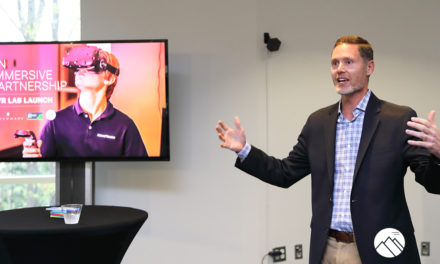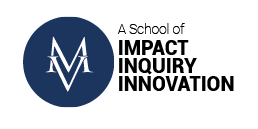When I talk about identity, please know that I am talking about multiple layers of identity. We all have internal identities, like race, age, religion, sexual orientation, gender, ability, ethnicity, and socioeconomic status. We are born like this. They have social significance, where one might experience privileging in the world.
Privileging. We have no problem finding story books and picture books that reflect identity, culture, experience. When we go to school, a lot of our teachers reflect that aspect of who we are, and the curriculum says people from ‘our group’ are the makers of history, the writers of great literature, the inventors of science and technology. And, we can turn on a TV or go to the movies and see ample representation of people like ‘us’ taking up the full range of human experience. Then you can look at any field – industry, government, entertainment, athletics, medicine, education, and you see plenty of folks like ‘us’, often in leadership positions.
Some of our identities experience marginalization, which could be where you have to work hard to find the story books, the teachers, the curriculum, the media representation, or the leadership role models that come from this background and experience. OR, you do see examples of people like you, but often it is a stereotypical representation that tells a single story and often a less-than story. So, you end up feeling worse about who you are.
All of us experience privileging and marginalization. You may have experienced a time where you’re told, ‘You’re too young. You’re too young to understand, you’re too young to have this responsibility, you’re too young to know what real love is.’ There are laws in place so that you can’t purchase certain things until you’re certain ages. You can’t engage in activities like voting or serving in the army or renting a car until you’re a certain age. There are even jobs that say minimum age requirement because, ‘you’re too young.’
If we’re lucky enough to live old enough, we start getting told, ‘You’re too old. You’re too old to learn this new technology, you’re too old to do this physical activity, you’re too old to still be dating. Cut this out by this age, give that up by this age, and retire by this age. You’re too old.’
There are other aspects of identity. Internal ones are certainly important, but there are external factors as well that deeply influence who we are and how we see the world. For example, your geographic location matters because if you’re a multiracial person in urban L.A., you’re gonna have a different daily experience than a multiracial person in rural, homogeneous Mississippi. That’s a reality.
If you grew up working-class in a working-class neighborhood, you are taught different things about what it means to be working-class, versus growing up working-class in a wealthy neighborhood.
Depending on how you identify and the regional attitudes toward your people or the national attitudes toward your people, your daily experience may be shaped by that. Right now, folks who identify as Muslim, LGBT, immigrant, person of color, woman, depending on regional attitudes or national attitudes in the country that folks are in, their daily experience can be completely normalized or completely marginalized. So, geography matters.
Your appearance matters because no matter how I identify, there are things through my appearance that you’re assuming. I think you’re getting hints about my racial identity. You’re getting hints about my gender. You’re getting hints about, possibly, my age. You’re getting hints about my ability status. There are aspects of who I am that just simply come through in appearance that will shape your perception and treatment of me.
There are aspects that I can accentuate because I can communicate gender conformity through things like hair, clothing, makeup, jewelry, et cetera. I can communicate ethnicity if I engage in things like Kente cloths or burkas or ethnically-tied ways of wearing hair.
I can communicate religion or spirituality if I wear certain visible symbols or religiously-tied clothing like Yamakas or Sikh turbans or hijabs.
I can accentuate messages of socio-economics because a sweatsuit is perceived differently than a three-piece suit. Does your jewelry look real? Do you engage in brand-name labels and logos that are associated with high costs?
All these things are affected by appearance. You can be a multiracial person, but depending on how you look. For instance, if you look more like one race than the other, then your daily treatment can be shaped by that too. So, appearance matters.
Then, when you open your mouth, what happens? Language matters. We all have primary language. We all have accents. Our vocabulary says all kinds of things about where we were raised, how old we are, what’s our cultural background, you name it, because you can call the same thing a hashtag or a pound sign. You can call the same thing a soda pop or a coke, and that tells me a little bit about where you grew up. Do you call it a bagel with cream cheese and smoked salmon, or is it lox and shmear?
In U.S. mainstream culture, educational attainment matters. I’m not convinced that the United States values smart people so much as formally educated people. Because I’ve known brilliant folks who have little to no formal education. They are perceived and treated differently in this world than somebody who’s acting like a fool, but they’ve got a string of letters behind their name, especially from certain institutions.
This is where identity development research comes in. The field was blossomed by the work of Erik Erikson who interviewed a bunch of folks and said, “Tell me the story of your life,” and he noticed that there were certain times of a young person’s life where there were critical developmental tasks, important things and needs that they had. And, if that development, that age, and support was robust, they would move on in a healthy way to the next stage of life, and if they didn’t get what they needed or they didn’t go through that process well, there were struggles, internal conflicts, psychologic mental health differences, you name it.
Think about this way: identity models are like a map, but it doesn’t actually determine the path that a young person will go through. It turns out we go through different journeys depending on which assets of identity we’re talking about.
When it comes to our aspects of identity that experience marginalization, we tend to go through this: we go from a home life where we are told, ‘You are beautiful, wonderful; anything you want to set your mind to, you can.’ You get affirming messages, so you feel good about who you are. And then, there’s an encounter, an encounter that tells you, ‘Maybe not. Maybe you’re not so normal, maybe you’re not so beautiful. Maybe you’re not so awesome.’ Maybe you go to school and bring your ethnic food, and people make fun of you for it. Or, you’re watching TV, and you see that somebody from your background is being portrayed in a way that makes them look really terrible.
These moments of encounter can happen again and again, and you start to experience self-doubt. You think, ‘Maybe I can’t be awesome and beautiful and successful, and maybe I can’t accomplish everything I want if I’m a member of this group.’ Many respond by assimilating to the majority: ‘Call me by this Americanized name,’ or, ‘I’m gonna stop speaking my home language,’ or, ‘I’m gonna stop bringing my ethnic foods,’ or LGBTQ kids will be hyper-pretending to be something other. They’re pretending to have crushes on people they don’t because they’re trying to conform to the majority. Or, ‘I’m gonna process my hair and do things with my makeup so I reflect more the U.S. mainstream standards of elite,’ and those on financial aid might buy trendy clothing and gadgets, so they can pretend they’re coming from resources.
For me, as a girl who was into math, science, building things, getting messy, being athletic and strong, I was told, ‘Girls don’t do that. Those aren’t girl things,’ and I wanted to access those things, so the way I assimilated to the majority was I masculinated myself. I pretended anything that was considered girlie was a terrible thing, whether I felt that or not. I lowered my register of voice. I started to dress more androgynously. I did all kinds of things to distinguish myself or make myself less feminine so that the guys would say, ‘Rosetta’s not like the other girls; we can totally let her get in on this robotics club,’ or whatever the case may be. So, that’s the way I assimilated to the majority.
There are some rewards to be had, but, frankly, it’s not sustainable because the psychological energy it takes to pretend to be something you’re not is exhausting, and it’s financially expensive, to tell you the truth. If you think about the amount of money that goes into buying the hip things or processing the hair or whatever, sometimes it’s simply expensive. And, frankly, it doesn’t always work.
For me, I think there is a moment of realization that there’s only so much assimilation you can do. In the late ’80s, early ’90s – no matter how much perm and tease my hair and my bangs are going up and going down, no matter how much I speak like a valley girl, folks are noticing I’m asian. That’s not going away, right? So, I’m done. I’m tired.
There’s a level of resentment and anger toward mainstream society, and there’s an immersion into identity. This is where young people say, “Call me by my African name. I’m gonna wear my hair naturally. I’m going to start re-learning and re-connecting to my language and culture.” This is where LGBT kids will be flamboyantly out. Like, “I finally get to live into who I am, so I’m just gonna be almost militant about how I show up in the world.” It sometimes shows up in a rejection of the majority world. All those kinds of attitudes are about gathering up into affinity and finding comfort and confidence in who you are again.
And then, oftentimes, it leads to emersion. “Okay, so that was cathartic, that was fun, that was important,” but I’m actually able to hang out with other people now. I understand that there are members of the majority group who will see me as a stereotype, but there are also members of the majority group who will see me as fully human. So, I can definitely have relationships across this difference.
Integration is that time when you think, “It’s an important aspect of who I am, but it’s no longer the primary lens through which I see the world.”
What’s interesting about marginalized identity is that we can’t help but go on this journey. The mainstream world sends us such strong messages, it’s hard to not go on this journey. For me, I knew what it was to be an ethnic other on my first day of school because I emigrated from Seoul, South Korea when I was 10, and I came to the United States. I didn’t know a lick of English, so school was very stressful for me on that first day. My mom had cooked me my comfort food lunch. So, here I was, first day of school, I’m stressed out; I’m being shuffled from place to place; I don’t know where I’m going, but, at lunchtime, here I am in the cafeteria. I am so excited to eat my food, and I open my containers, and I’m watching people gather around and say, “Oh, my gosh. What is that? That looks gross, and it smells disgusting.” I didn’t even know English, but I knew that’s what they were saying. So, I put the lids back on my food, and I put it away. I didn’t even eat lunch that day. I put not just my lunch away but everything ethnically other about me away. And, that was the first day of school.
And, boys who don’t gender conform know pretty much as soon as they enter school that they are not following the rules of boy world, and they get told that message really harshly and really quickly. So, as early as three years old, gender nonconforming boys know that there’s something different about them.
Maybe you think that everyone can have playdates with anybody, but you realize when you go over to a friend’s neighborhood, all of a sudden you’re not allowed to go back to have a playdate in that neighborhood because that’s a bad neighborhood. So, whatever it is, there are some messages that let you know, “People outside of my group are considered less than or other.” The effect is of cognitive dissonance. You want the world to be fair and kind and good, and you realize it doesn’t always show up that way. It’s a really bad feeling.
Some folks try to respond by attempting to reintegrate. This is where you come up with a perfectly logical explanation for why these inequities exist. This is where folks will say things to me like, “If those people would just work harder, they would make it in the United States like everyone else,” when they say things like, “There’s no gender bias in the workplace, it’s just that women leave the workplace and go have kids and have children, and that’s why we don’t have a lot of female leaders. It has nothing to do with gender bias.” So, no matter what, there’s a perfectly logical explanation for why these biases exist.
When you take a look at the research around how many people engage in illicit drugs, it turns out it’s about the same percentage of population in every racial group that engage in drug activity. So, we should, in the prison system, see approximate representation of the U.S. population in terms of distribution of race. We should, but we see an over representation of black and latino communities. If race is not part of the issue, what could it be about?
Frankly, most people’s re-encounter happens because of relationships. You befriend somebody across this identity line. As a father, you have a feminist awakening because you just had a little girl. This is where straight folks have a LGBT-inclusive awakening because their child just came out of the closet. Or, you have a different attitude around religious inclusion because you realize your child is gonna marry outside of the faith, and you want to keep connected to the child and the future grandchildren you might have.
Whatever the case may be, a re-encounter is often relationship-based. You realize they are experiencing the world in a fundamentally different way, and there’s no denying the fact that they are doing everything they can, but there are bigger things that influence their experience. Oftentimes, there’s an acknowledgment of that, and many folks end up feeling guilty. “I didn’t want this. I wasn’t a part of making this happen, but I see it’s real now, so I feel bad.”
Guilt is a great place to start because it lets me know you’re a good person who doesn’t like unfairness even if you’re at the benefiting end of it. That’s a terrible place to end because I’ve never known anyone to be like, “I feel so guilty that I’m gonna go change the world.” It’s not a motivating function. So, some folks hit that stage of acceptance and action. It isn’t my fault, but I want to do something about it to make the world a fairer place.
And then, immersion and emersion is also like examining self-identity and how that shows up. This is where, for example, white European heritage folks will do things like trace ancestral heritage or visit ancestral homelands and learn a little bit about ethnic culture because they realize that part of racial dynamics in the United States is that European immigrants don’t get to hang on to their ethnic culture, language, and customs the way communities of color can.
At 19, I worked with somebody who was profoundly deaf who was the most brilliant person in the world. His parents refused to teach him sign language, so he taught himself how to lipread so beautifully that he can tell you what’s happening across the room. He wanted to communicate with other deaf people, so he taught himself ASL, American Sign Language. Many of his teachers and schools – he went to a mainstream school – didn’t do things like face the class every single time they gave a lecture or direct their face to them so they could lipread. So, frankly, he got through K-12 education mostly on his own, through independent study. And, he was self-taught on so many things, and, actually, he knew more about anatomy and physiology than I did, and I was a superstar in high school.
So, I said, ‘I don’t understand. How come you’re not a doctor right now? You’re brilliant, and you know everything about medicine already.’ He said, ‘I would love to go to medical school. I would, but there’s a challenge. To apply to medical schools, they want you to have a foreign language, and many of them don’t consider ASL a second language.’ I stopped him, ‘Wait. So, you have to figure out how you’re going to speak French so that you can go to medical school?’ He said yes. That’s just fundamentally not fair. Here is somebody who is capable and yet there’s this systemic barrier that gets in the way. I didn’t even hit guilt. I just went into righteous anger right away.
But, here’s the thing. As passionate as I am about making the world more inclusive and offering more opportunities to people with disabilities, if I had never met my friend Rob, I’m not sure I would have gone on this journey. In fact, to be honest with you, I don’t think would have been as passionately awakened or motivated.
Again, many identities are forming at the same time as our attitudes are shifting. So, how to support that identity journey is to help children understand that they have identity frames, like picture frames. You can have a whole vista, but as soon as you put a frame around it, you see a limited piece of it. These identity frames are informed by things such as race, ethnicity, gender, sexual orientation. The same thing can happen in a setting where you and I are looking at the same thing, but you won’t see it the same as I do, because of our different identity frames.
How do we support kids in seeing their identity as a springboard for opportunity rather than a limitation for who they can be? For example, I had fairly intractable ideas around what it meant to be a good Korean daughter. I thought that my journey had to include getting straight A’s in school, get into Harvard, meet a nice Korean boy, and have three nice Korean children, ideally boys, become a doctor, and live productively ever after. That had to be my journey. And, you can imagine what happened when I took my Harvard pre-med degree and went into professional theater.
When I hear, ‘I can’t show how smart I am because I won’t get a date to the prom.’ When I hear black and latino young men tell me things like, ‘I’m gonna get so much more affirmation from this world as an entertainer or an athlete, why should I pursue the sciences like you’re encouraging me to?’ When I had students on financial aid tell me things like, ‘I don’t know if I’m smart enough to be here because people are all talking about places they’ve been to or museums that they’ve gone to or authors they’ve read, and I don’t know what they’re talking about.’ Much of that is actually signifiers of access, not intelligence. Those are intractability things going on.
I wonder how we can instill the notion that because you are who you are, these are your backgrounds, and these are your experiences — all of which makes you more resilient, creative, or resourceful to be anything you want — versus because you are a part of a community, this is who you have to be.
A series of positive and negative encounters shape each individual. People need to surround themselves with positive encounters and try to be resilient through the negative encounters. I don’t blame my classmates who rejected my ethnic food because I think they were responding to the unfamiliar in the way kids will. I just wish that their parents had taught them, ‘Hey, the foods we eat are common in the United States, so you may think this is the only thing that’s normal, but there are people from lots of other communities and cultures where the spices will be different, the smells will be different, and the look will be different, I need you to know to never reject somebody or make fun of somebody because they’re eating foods that you’re unfamiliar with.’ I wish that was the lesson that happened along the way.
Socialization messages tend to be one of two kinds. One, which is a pride message: ‘This is who you are. This is the history and legacy of our people. Here are some conjugations that were made to the society from members of our group. These are the challenges or the oppressions we’ve had to overcome, and we have remained strong and resilient. You are a part of that community and legacy and experience. You should be proud to be who you are.’ And, it turns out, pride messages you can do in abundance. Pride messages are always good for kids, as long as it never goes to chauvinism, which is, ‘This is where you come from, and you should be proud, and we are better than everybody else.’ That’s chauvinism. Pride, you can do in abundance.
There is a secondary form, which is protective socialization. This is where you’re trying to prepare the kids for a world that might not welcome them as who they are. So, this is why Jewish families will discuss the holocaust. ‘This is what religious intolerance can lead to, and it’s important to stay vigilant and aware of those things.’ This is why parents of teenage girls who are maybe working night jobs for the first time and driving themselves back and forth, you bet there will be a conversation about, ‘Park the car in a brightly lit spot, and then, when you’re going from the store to the car, I need you to hold your keys a certain way, have your finger on the mace, be alert, make a beeline to the car, get into the car and lock the door, and then you can pay attention to whatever you want.’ This is why black communities do driving while black classes. ‘This is how I need you to behave when you get pulled over, not if you get pulled over, but when you get pulled over so that you’re more likely to survive that encounter. And, that’s been happening long before Black Lives Matter.
I encourage protective socialization. Turns out you need to do some. If you don’t do any, and young people encounter a world that rejects them for who they are, they are hurt, or experience depression and insecurity. However, if you do too much, then children start to see the world as a hostile and dangerous place, and there’s nothing they can do to win. I like to think about this way, ‘I want you to be strong. I want you to be prepared. I want you to be safe, and then I want you to feel hopeful.’
I wish we lived in a world where people saw you just as beautiful and capable and wonderful as I do, and many people will. Many people in the world are good and kind and fair and will see you as capable. Every once in a while, though, you’re gonna encounter somebody who may not feel this way, and this is not your fault. It’s not your fault, and you shouldn’t have to deal with this in the world, but you may have to, in which case I want you to be strong and prepared.
In terms of age appropriateness, it’s actually surprising how early you can start having conversations with children. They notice race as early as six months old – it’s clear that they notice racial feature differences.. By three years old, they’re aware of gender — they are already starting to pick up on these cues. By five years old, they have a major desire to categorize. They ask tons of questions about difference, sometimes loudly and embarrassingly so. And we satisfy their curiosity about lots of things except for identity because I’ve overheard conversations where the young person asks, “What is a square?’ And we respond, ‘It’s a shape with four sides.’ They ask, ‘What is pink?’ And we respond, ‘It’s a color between white and red.’ And they ask, ‘Why does that person have different skin than me?’ And we respond, ‘Shh.’
We have to satisfy that curiosity because they just want to know. If we don’t explain when we shush them, kids pick up on two messages: 1) adults talking about things like human difference is a scary and bad thing to do; and 2) adults in my life won’t teach me about it, so I’ve got to figure it out on my own.
It turns out kids as early as five actually have racial biases. You can do this research in homogenous areas, diverse areas, conservative areas, liberal areas. It doesn’t matter. If you give a five-year-old a cartoon script with an identical cartoon little girl, and the only difference between the little girls is difference in skin tones, and you ask five-year-olds, ‘Point to the girl who is nice, point to the girl who is mean, point to the girl who is good at school, point to the girl who’s not good in school,’ and five-year-olds will associate positive attributes with lighter skin tones and negative attributes with darker skin tones, sometimes even children of color. That’s how strong the messages are.
And, when the footage of the five-year-olds doing this is shown to their parents and teachers, they are mortified. They indicate that this is not what they believe, that is not what they teach. Interestingly, when asked what they have taught them about race, there is no response. Start early. Maintain their innocence of being fair-minded.
By seven years old though, they may have biases, but they know there are some sort of things they can or cannot say or do. And, we know this from research with seven-year-olds and five-year-olds because five-year-olds will just blurt out whatever they think, no filter. And then, the seven-year-old will correct the five-year-old, but the correction is often very indicative of how they were raised.
By third grade, they’re aware of societal stereotypes. They don’t necessarily believe them to be true, or they don’t take them personally, but they know they’re out there. I’ve done stereotype workshops with third-graders. One boy said, ‘Those are all stereotypes about Jewish people.’ I responded, ‘You know you’re Jewish, right?’ He said, ‘Yeah, I know.’ So, he wasn’t taking it personally or believing these stereotypes, but he knew they were out there. By fifth grade though, not only do they know they’re out there, they’re starting to believe them.
So, here’s the thing. Talk to kids. When they ask questions, instead of shushing them, find out what they’re trying to say because with little ones, oftentimes we assume. Did they hear it from an older child? Did they see some bullying happen? Are they curious and they want to find out more about who they are? Find out why they’re saying it.
My advice is this: Have a straightforward conversation. Answer factually and simply. You don’t need to teach them about institutional racism right now. It’s about helping them clarify their understanding of the world. Model and coach humility and delight and curiosity about difference because they will pick up from you all kinds of hidden messages. When you encounter a new food or a new community or a new culture, what is your response? Is it rejecting, or is it curiosity?
Also, be mindful of the media that your children engage in. Those who watch children’s media tend to show more exclusive and bullying behavior than those who engage in adult media. 30 minutes of Spongebob will expose your kids to worse concepts and language than if they were to watch 30 minutes of Friends. Siblings that read the Bernstein Bear series are meaner to each other than sibling pairings that don’t. Before you start throwing books away, just pay attention to the balance of prosocial and antisocial behavior because, oftentimes, children’s stories dramatize what’s important to kids, which is friendship, kindness, fairness, inclusion. So, if there’s conflict, you bet there’s gonna be unkindness, unfairness, exclusion, and bullying. In much of children’s media, the balance of antisocial demonstration than the prosocial demonstration of friendship, inclusion, and kindness.
Just be mindful. If you read to your kids or with your kids, interject your family’s values along the way. It’s a dance of balance.
![]()

